
Ever wondered what Spoonflower is and what their fabrics are like? This week’s blog post is written by guest writer Ronya Lake where she explains all about Spoonflower and their best fabrics for bag making.
————————————————————————————————–
Spoonflower is a print on demand textile and wallpaper manufacturer. Makers can shop for designs by independent artists from around the world and order the exact amount of fabric that they need. This creates a unique opportunity to sew truly personalized projects. Spoonflower currently offers 26 different types of fabric. For this guest blog post I asked bag makers which are their favourites, and why.
Colour Notes
Spoonflower designs are printed on one side of the fabric using eco-friendly, water-based inks.
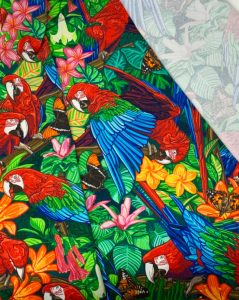
Colour prints on one side of the fabric
The world of textile printing is rapidly changing. In response to demand for greater variety of colour and design, some manufacturers are pivoting from rotary screen printing to digital printing technology. This allows for economical short-run production, down to the single fat quarter. Digitally printed fabrics have design colours printed on one side of the fabric, the other side remains white. But, unlike rotary screen-printed fabrics, artists are not limited in the number of colours that they can use.
Inks are colour fast and machine washable
All of Spoonflower’s fabrics are printed using water-based pigment inks and dye. Pigment printing uses less chemicals and requires no post washing or steaming process; therefore, it is more environmentally friendly than reactive, acid dye, and direct disperse inks. The fabric options available on Spoonflower are all machine washable. Do check the washing instructions for each fabric, and choose a phosphate-free laundry soap.
Colour variation between synthetic and organic fibers
There are slight differences in how designs print across the different Spoonflower fabrics. For example black will appear ink-black on polyester fabrics and charcoal-black on cotton fabrics. Finely detailed patterns will print more clearly on tightly woven fabrics and will be less crisp on textured fabrics. It is a great idea to order swatches of your fabrics before making your final choices.
————————————————————————————————–
Five Favourites for Bag Making
Petal Signature Cotton
Petal signature Cotton is Spoonflower’s most popular everday-use 100% cotton woven fabric and it’s a great place to start if you are new to print on demand textiles. With vivid, crisp colour, it beautifully showcases detailed designs. This quilting-weight cotton can be used for pockets and lining. For bag exteriors use one or two layers of woven interfacing. I made this Teloujay Cross Body using a fat quarter of my ‘Mechanical Pelicans’ design, and a handful of remnants. I like to block fuse the interfacing (and then make a cup of tea) before I cut pattern pieces.
For her Teloujay Judi Niermann matched ‘Just Jellies’ by Kate Rhees to some charcoal cork, water resistant canvas and batik fabric. The Petal Signature Cotton was interfaced with an sf101 equivalent. “I’ve found that the darker colours make the cotton very sturdy, compared to lighter coloured designs. The extra ink adds some structure. I always prewash my fabrics, as I feel it helps the interfacing to grab on” – Judi Niermann
Petal Signature Cotton is perfect for bags with card pockets or any other kind of fussy ‘origami’ details, because it has some structure, and you can finger press the seams as you work. It has some give, but no stretch, so small cut pieces hold their shape well when sewing. Use a Universal 70 or 75 needle on any domestic machine.
Dogwood Denim
I love the durability of the Dogwood Denim and I’m just obsessed with the vibrancy of the colours. Designs show on the twill weave in beautifully saturated hues. Expect some shrinkage with the denim. Serge or stay-stitch the cut edges and use a delicates bag when pre-washing.
I chose Dogwood Denim in my ‘Floral Toile’ design to sew this Teloujay because I wanted my Spring colour palette to really pop. I reinforced the denim with woven interfacing for structure. The coordinating blue denim was a remnant from an old pair of jeans, and I used Petal Signature Cotton for the interior pocket and lining. Dogwood Denim is a beginner-friendly fabric, sturdy enough to hold the shape of smaller pattern pieces without sliding around as you stitch. Use a denim needle, and switch to a fresh needle, or adjust your tension if the fabric starts to pull at the stitches.
Recycled Canvas
I have to admit that the first time that I made a wallet with the recycled canvas I was not a fan. It took a little practice and a lot of quilter’s tape to really fall in love with this unique fabric. Recycled Canvas is 100% polyester and each yard is made from 10 recycled bottles. If the image that it conjures is an inflexible brittle mess, you will be surprised by the beautiful smooth drape, radiant colour saturation and subtle luster of this showstopper. With hydrophobic qualities, it is an excellent choice for bags that get a lot of use like diaper bags, toiletry bags, and backpacks.
‘Art Deco Boats’ by Sue Shorman Art on Recycled Canvas
Try the Recycled Canvas for a small project like this Nasyow pouch before making something more involved. Even though this is a woven fabric, I work with it more like a knit. The canvas slides around and frays quickly. Block fuse before cutting, and avoid pulling on the fabric as you iron. Use pattern weights to hold it in place and move your body, not the fabric as you cut. Use plenty of pins or clips for sewing and baste or stay stitch seams wherever appropriate. Okay, that sounds like a lot of fuss, but I promise the results are worth it. Bags made with recycled canvas look really sharp, and feel splendid.
Amy Hutton stitched this Konin Bowler Bag using my ‘Floral Toile’ design on Recycled Canvas with a coordinating cork handle and linen card pockets.
‘For bag making I like Spoonflower’s Recycled Canvas the best. I like to use a denim needle. I fuse prior to cutting, because it does have a tendency to fray’ – Amy Hutton
Cypress Cotton Canvas
This 100% cotton, upholstery-weight fabric has a stylish basketweave texture and is a pleasure to sew. Choose a denim needle size 90 and heavy or all purpose cotton thread. This type of weave doesn’t easily ‘heal’ from ripped stitches. If you do need to remove some stitches, work carefully with your seam ripper, to not snag the fabric, and then gently drag the edge of a spoon across the weft and warp of the fabric before steam ironing along the needle holes. Designs with lighter colours will not show needle marks as much as darker designs.
For this Teloujay Crossbody Bag, Judi Niermann paired gunmetal hardware and charcoal cork with ‘Forsythia’ designed by Spellstone on Spoonflower Cypress Cotton Canvas.
‘Cypress Cotton Canvas has a wonderful texture, and holds a crease for strap making. To prevent the edges from fraying, I interfaced with SF101 and then used a zig zag stitch around the top edge, before I added the zipper.’ – Judi Niermann
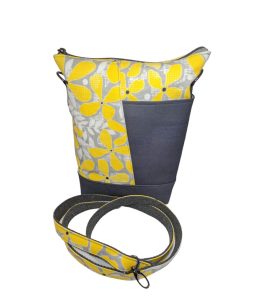
Lightweight Cotton Twill
A 100% cotton with a structured yet drapable twill weave, this fabric is easy to sew on a domestic machine. Choose a universal needle size 80 or 90, and use a polyester all purpose thread.
‘I love using Spoonflower fabric for bags because I can wash them in the regular laundry! I really like the texture of the Lightweight Cotton Twill. I learned that it is very easy to unpick stitches from the Twill. It is a little floppier, so it works well for large totes that you want to be able to fold for storage. ‘ – Brenda Zapotosky
Jo Kay stitched these pattern samples using the Lightweight Cotton Twill paired with cork and….
‘I enjoy working with the lightweight cotton twill, but the print colour on the twill is quite different to other Spoonflower fabrics. It has a slightly lighter, almost worn in feel about it, like denim jeans. It gives the bag a classic, casual look.’ – Jo Kay
————————————————————————————————–
About Ronya Lake

Ronya Lake is an interdisciplinary artist and surface pattern designer working from her home studio in Victoria, BC, Canada. She learned to sew by making her own costumes when she worked as a contemporary dancer in Vancouver. She began to sew bags as a way of showcasing her textile designs, and loves to give them as gifts. You can read more from her sewing blog at www.ronyalake.com. Ronya’s textile designs are inspired by nature, science and literature. You can browse her Spoonflower design library here.
Contributors:
Judi Niermann, MeMaw Made It
Amy Hutton, Bed Hog Shop
Brenda Zapotosky, Surface Design and Illustration
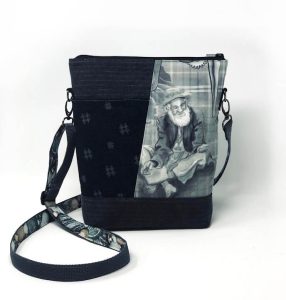
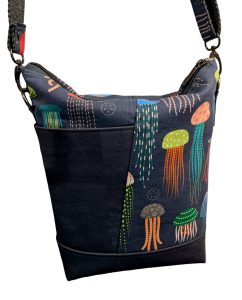

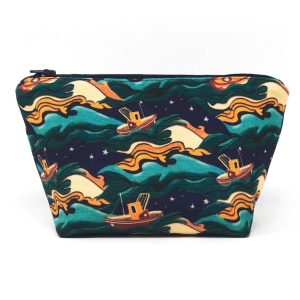
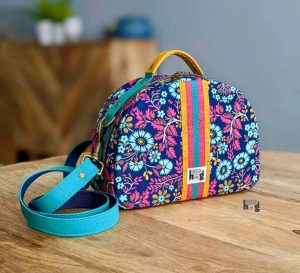


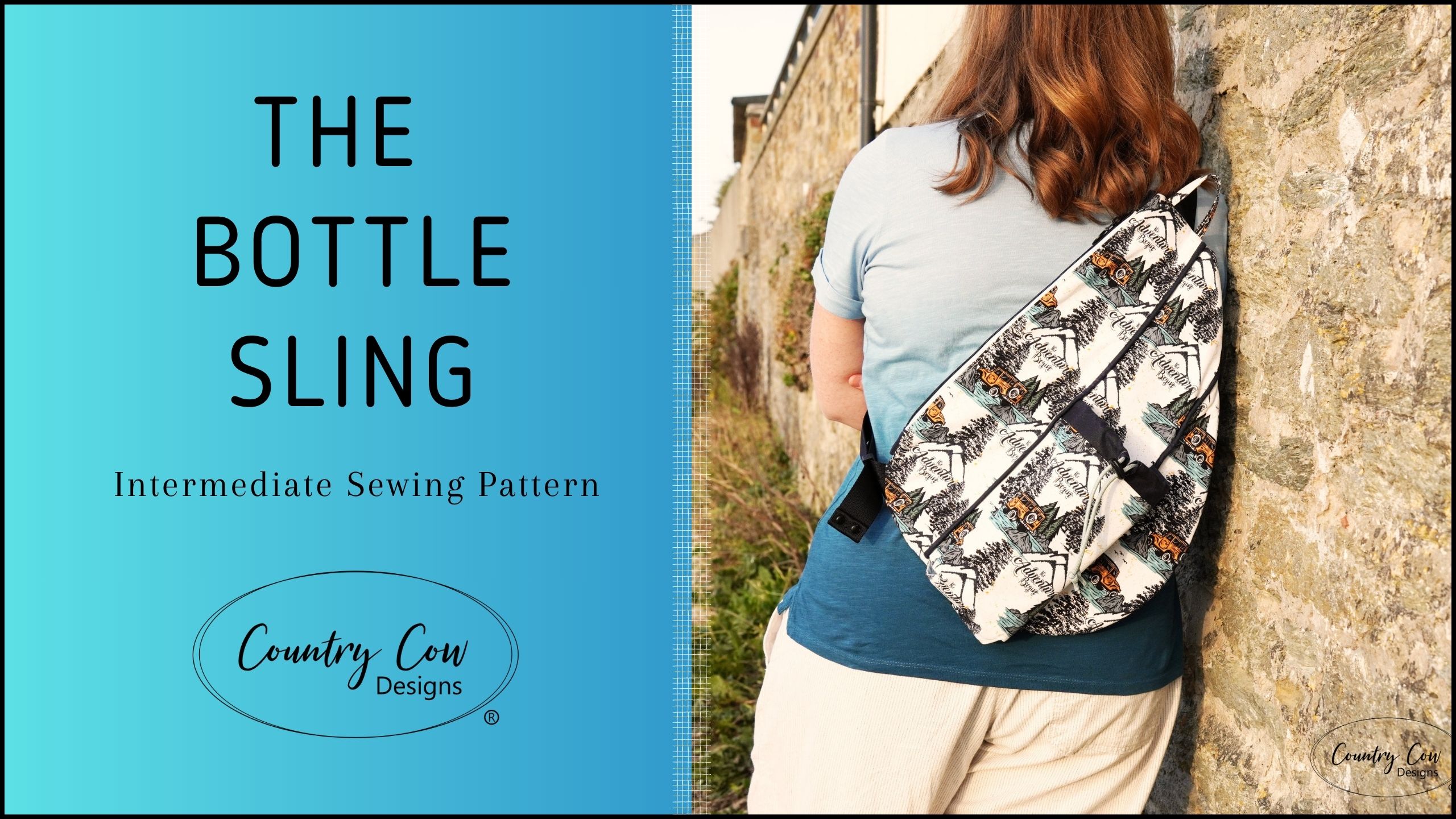
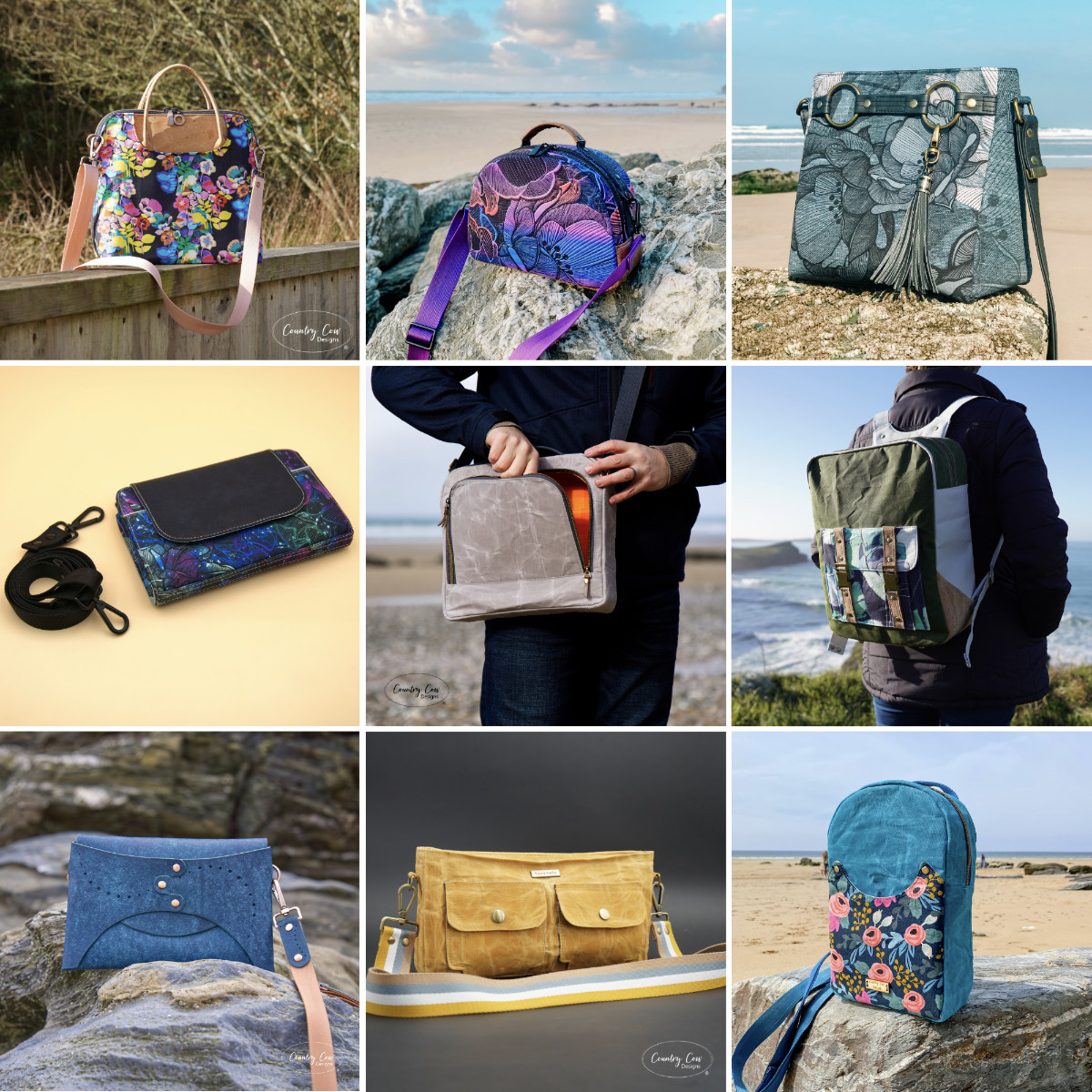
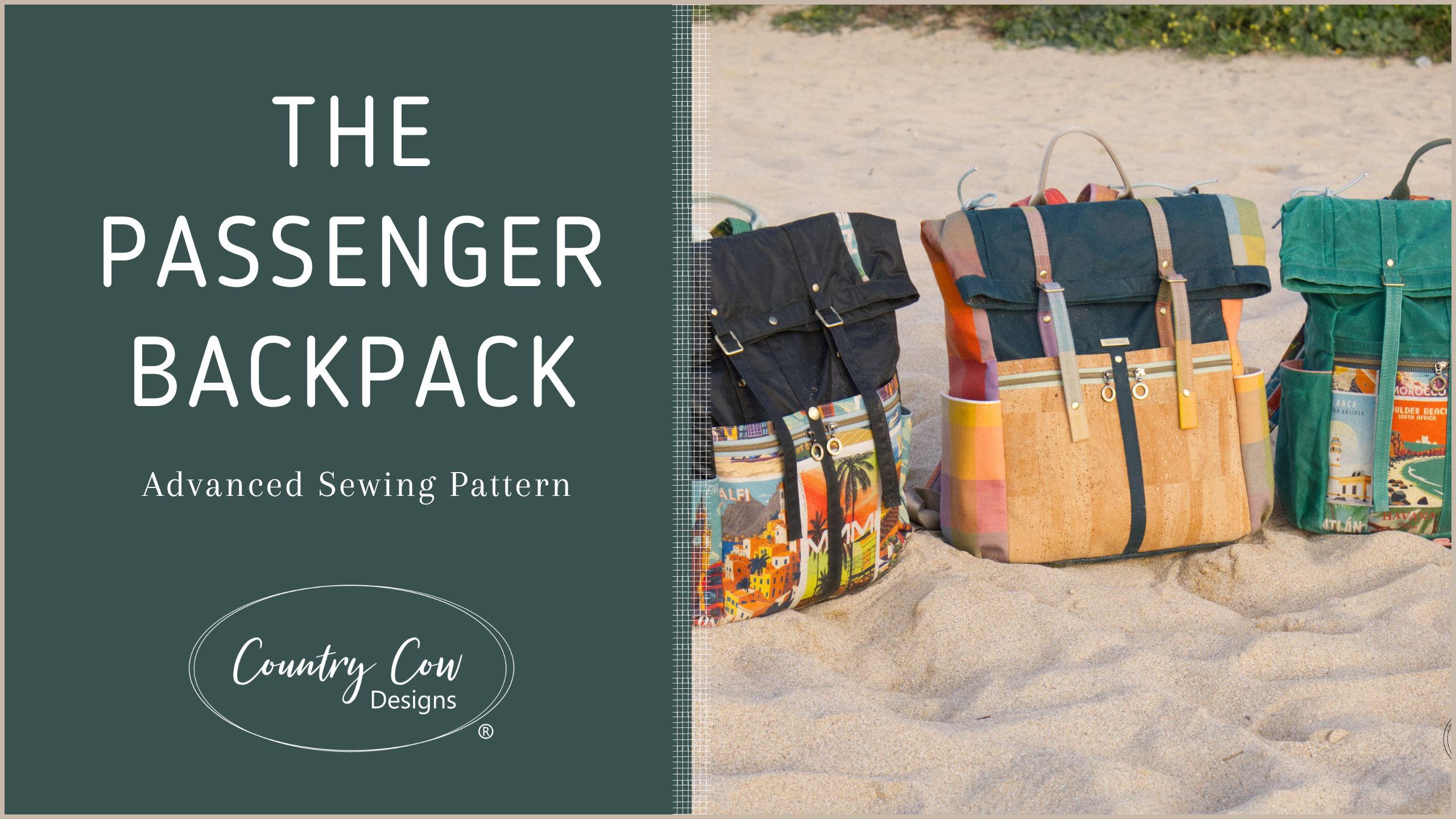
Thank you Ronya for this great blog post on Spoonflower and their different fabrics. I really liked how you went through and discussed the fabrics that were good for bag making. I am a new bag maker so I love this helpful information. I am a surface designer that also designs for fabric and I have a shop on Spoonflower, it is Scarabrea Designs. I was talking recently to someone who said they did not like Spoonflower fabric because it did not have a nice feel like other fabrics. I am wondering if that is the different inks that are used. I do not know but I really like the structure they have. Other quilt cottons may be softer but they are very flimsy. Thanks again for this post. Thank you Country Cow for this blog I have learned so much since reading it.
Hi Elisabeth, Thanks for your kind comments, I will check out your shop on Spoonflower. I agree that the Spoonflower Petal Cotton has a more structured feel, than some other types of quilting cotton. For clothing I like the cotton spandex jersey. It is very soft. The Spoonflower fabrics do soften with washing too.
Thank you, Ronya. This is great information! I think I will try some of the recycled canvas. I love the idea that a yard contains 10 plastic bottles!
Hi Donna, Wonderful! Let me know what you think of sewing with the recycled canvas. I just ordered some to make the bag of the month club pattern for January. Looking forward to diving in to a new project.